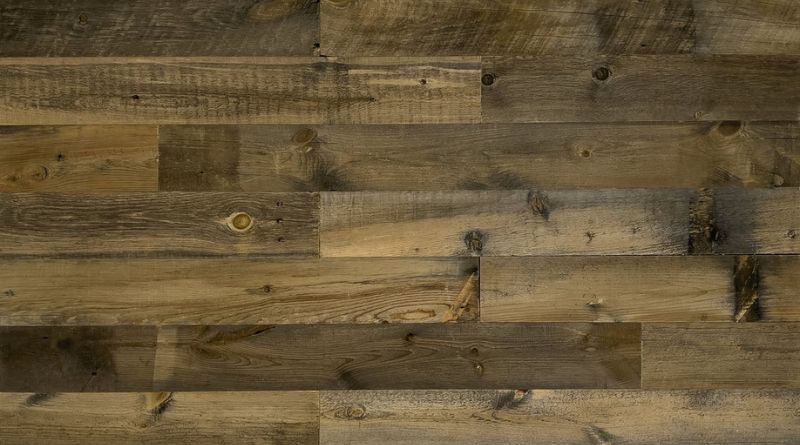Although wood planks have greatly come back in both indoor and outdoor applications in recent years, wood has always been a mainstay of design, architecture, and usefulness. Whether you are restoring a little farmhouse, designing a contemporary loft with natural materials, or just enhancing your space with a touch of rustic charm, wood planks bring ageless appeal and character to any setting. Rich in history, varied in kind, and full of applications, these natural elements are far more than just utilitarian; they are vital for the development of warm, inviting, and beautiful spaces.
The Timeless Appeal of Wood Plank
A fundamental building element in homes and structures all throughout the world, wood planks have been in use for eons. Their attraction has not diminished; rather, they have evolved. Today’s appreciation of wood planks is as much for their visual attractiveness as for their use. The grain, texture, and color variations of natural wood offer a kind of authenticity that synthetic materials could never equal.
The flexibility of wood boards greatly attracts. Wood may be changed to fit any style from contemporary minimalist homes to classic rustic cabins. Wood planks, especially the backbone of rustic design, offer a warm, grounded, and inviting tone. Whether used on furniture, ceilings, walls, or floors, they offer a natural, pleasant quality that rapidly transforms a space.
Different Types of Wood Planks
Among the most fascinating features of wood planks is the vast diversity of species, finishes, and cuts available. Every kind of wood has its own characteristics in terms of color, grain pattern, hardness, and longevity.
Famous for its strength and durability, oak planks are a conventional choice for flooring and furniture. Their tight grain and color range—from golden brown to deep red—make them quite attractive.
Pine is a softer wood with a lighter tone and more obvious knots, which gives it character. Many choose it for its cheap price and rustic look.
Rich, rich brown tones make walnut appealing for its sumptuous appearance; it is frequently seen in luxury work.
Often used for outdoor projects like cladding and decking, cedar and redwood are two woods that naturally repel insects and decay.
Recycled wood planks are excellent for the environment and aesthetically pleasing. Often worn and with a story, these boards are perfect for emphasizing ancient charm.
Every type of wood plank offers a unique vibe for a room; your design goals, budget, and intended use will guide which one is suitable.
Wood Plank Applications in Interior Design
Designers return to wood planks as a key choice for good cause; they simply work in so many various ways. Among the most common applications for wood planks in modern interior design are
1. Covering the floor
Perhaps the most traditional application, wood plank flooring remains a gold standard. It is not only beautiful but also long-lasting. Plank flooring offers treatments across thin to large boards ranging from raw and matte to glossy and polished. Especially well-liked these days are broad boards, which offer a more smooth, rustic appearance.
2. Accent Walls and Paneling
Accent walls made of wood planks can radically change a room. It adds texture, warmth, and visual interest. Whether left natural for a cabin appearance or painted white for a farmhouse atmosphere, wood paneling is a great way to stand out.
3. Roofs
Wood plank ceilings—especially when paired with exposed beams—create a warm, lodge-like feel. Even in more modern environments, using lightly stained or whitewashed planks on the ceiling can provide a slight rustic touch.
Furniture and Built-ins
From dining tables and bookcases to kitchen islands and window seats, wood planks are an excellent method to design custom furniture. Especially recycled planks offer a sustainable way to produce one-of-a-kind, rich in character products.
Kitchen and Bathroom Finishes
Although wood might not be the first material you think for kitchens or bathrooms, treated and sealed wood planks can be creatively used in backsplashes, cabinets, and even tub surrounds. In places often dominated by tile and metal, they offer an unanticipated touch of nature.
Wood Planks’ Allure in Rustic Design
Rustic design is all about valuing the natural material’s raw beauty, and wood planks absolutely reflect that mindset. They provide places a tactile, natural texture that could otherwise feel cold or impersonal. Common in rural homes, broad, weathered boards with obvious grain and knots serve to create a lived-in, pleasant environment.
Rustic design thrives on imperfection—something that wood planks especially well deliver. Natural wear, weathering, and age indicators are not flaws; they are characteristics. Mass-produced, industrial materials just cannot inspire agelessness or tell a story.
Combining wood planks with stone, metal, or woven textiles creates a rich, earthy setting that seems anchored and linked to nature. Rural getaways, mountain homes, and even urban apartments seeking some natural peace all really appreciate this.
Wood Plank Maintenance and Longevity
Though wood planks offer numerous benefits, they also require suitable care to maintain their integrity and attractiveness. Upkeep will change depending on the sort of wood and its finish. Here are a few ideas:
Consistent dusting and cleaning will help you prevent scratches. A hardwood floor attachment should be used with a mild vacuum or brush.
Maintain wood dry to reduce warping or mold growth, especially for wall or flooring applications.
Sealing your wood planks protects them from scratches and stains. Over time, refinishing can restore their appearance and extend their life.
Furniture should be padded; protective padding under table and chair legs helps to prevent scratches.
With suitable care, wood planks can survive for decades, sometimes growing more beautiful as they age.
Sustainable Development and Eco-Friendly Options
Wood planks might be a fantastic solution for folks who cherish sustainability—if bought properly. Look for FSC-certified (Forest Stewardship Council) or salvaged wood products. Reclaimed wood not only reduces deforestation but also recovers items that could otherwise end up on sites.
Officially a grass, bamboo planks are rather renewable and offer a wood-like appearance, growing again after only a few years following harvest.
Natural treatments and no strong chemicals help to make your wood planks more safe for your indoor air quality as well as more environmentally friendly.
Final Thoughts: Creating to Invite Nature
In the end, the appeal of wood planks is in their connection to the natural world. On a day when much of our environment is electronic, fast-paced, and phony, wood brings us back to something genuine and grounding. Given designs that highlight natural materials, craftsmanship, and authenticity, it’s hardly unexpected.
Whether your project is building a new space, renovating your home, or just adding some rustic touches, think about including wood planks. Their timeless charm, tactile warmth, and flexible form could improve the welcoming quality of any environment. Rustic doesn’t have to mean ancient; when done correctly, it suggests soulful, grounded, rich with character. Among the finest ways to bring that attractiveness home are wood planks.



